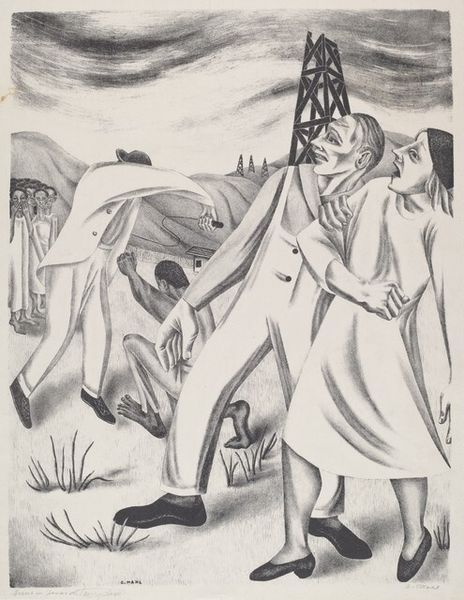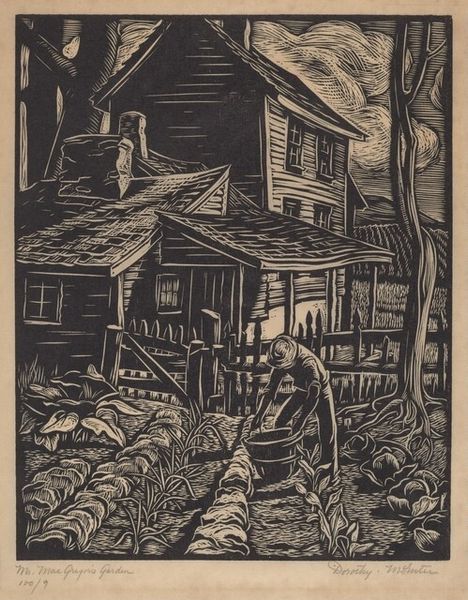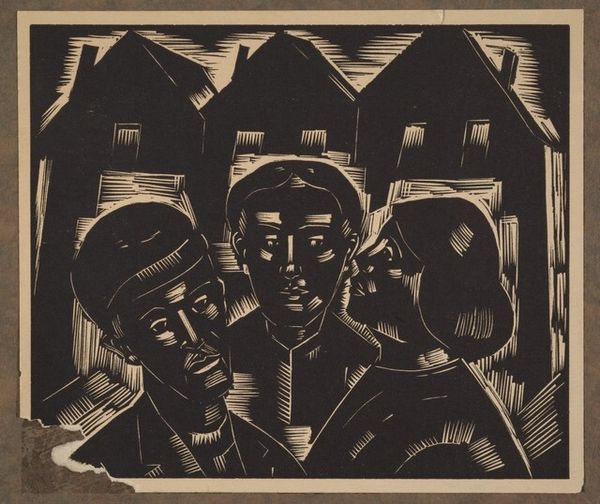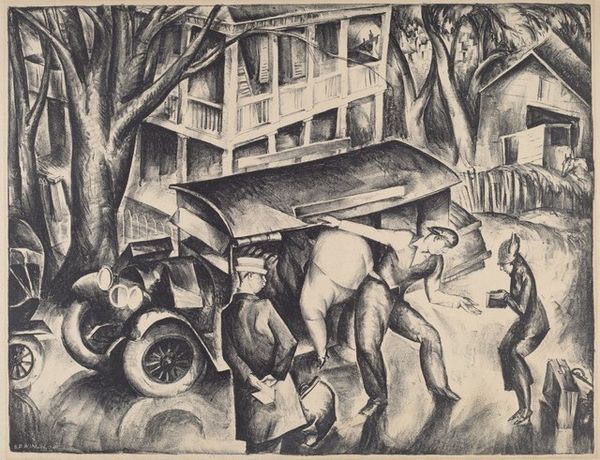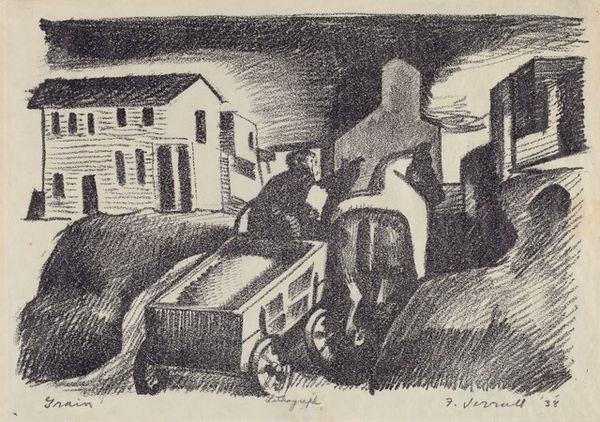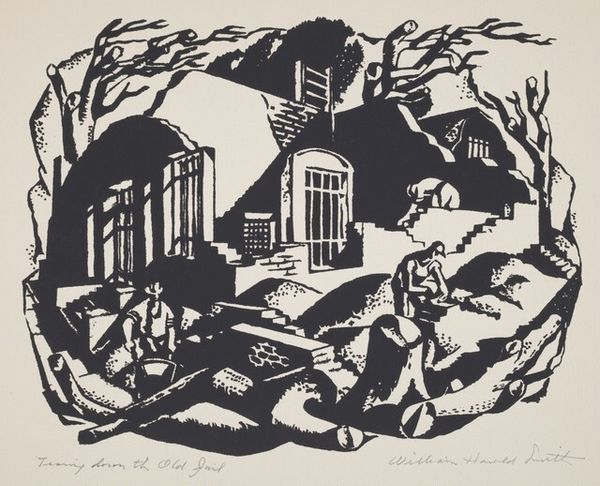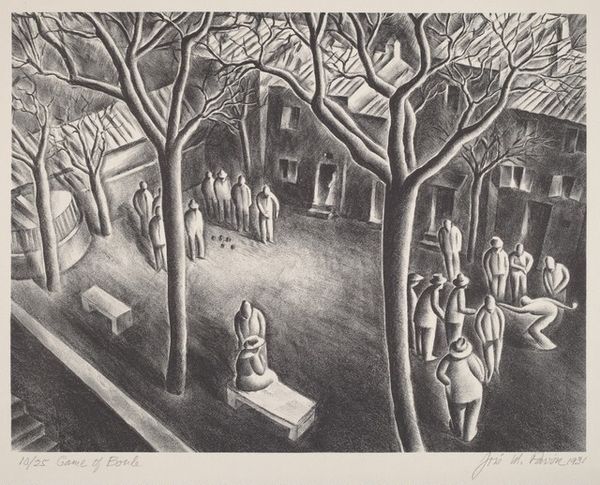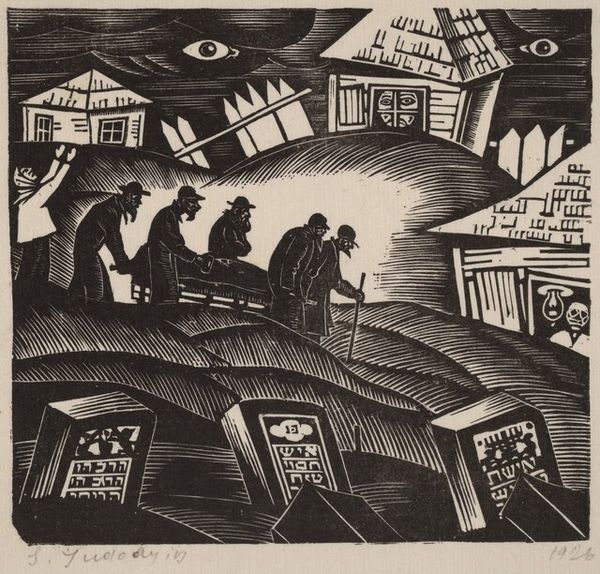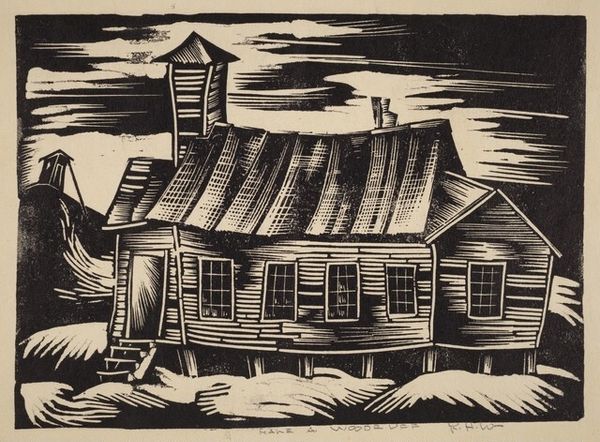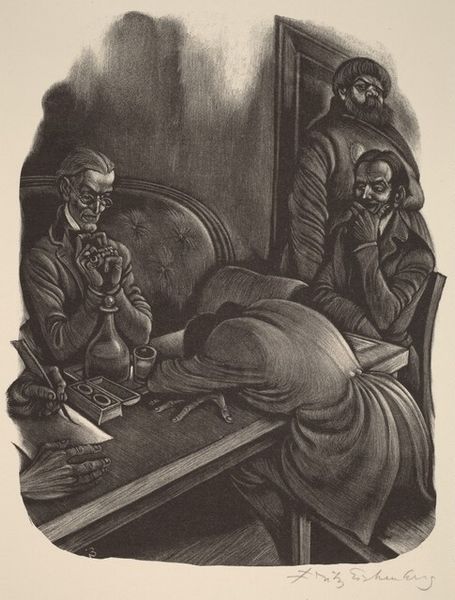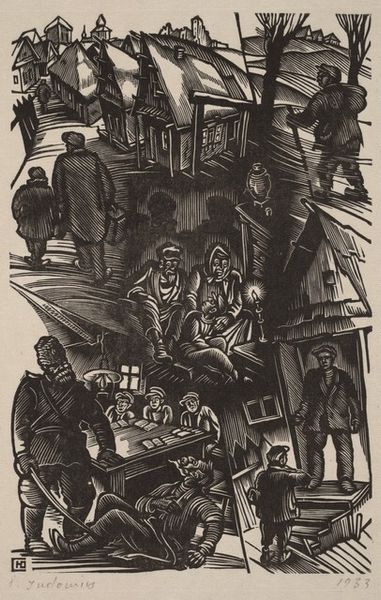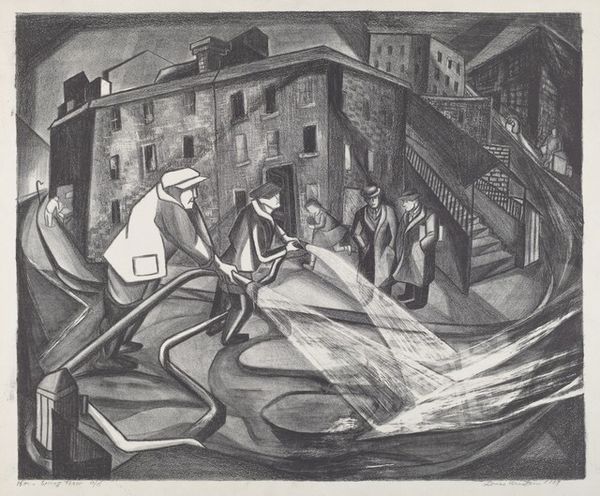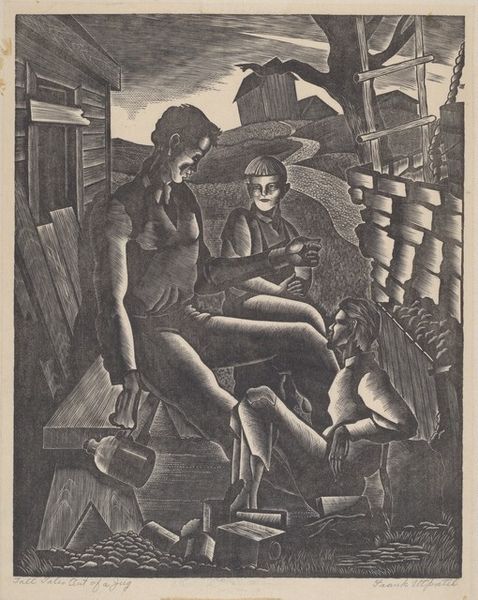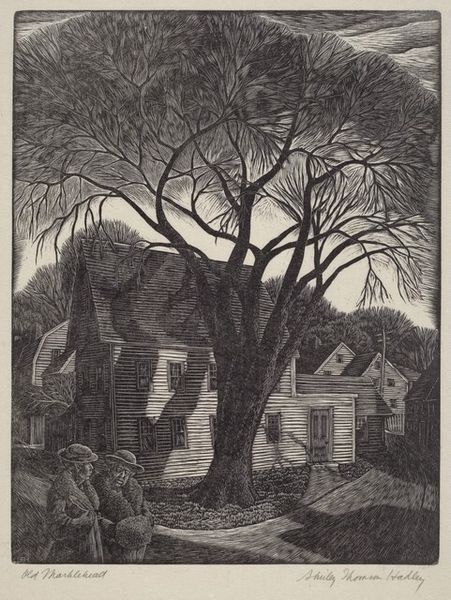
lithograph, print
#
lithograph
# print
#
landscape
#
figuration
#
social-realism
#
genre-painting
#
modernism
#
realism
Dimensions: Image: 394 x 343 mm Sheet: 485 x 415 mm
Copyright: National Gallery of Art: CC0 1.0
Editor: This is Mitchell Siporin's lithograph, "Back O' The Yards," from around 1937. There's something quite haunting about it. The figures feel…stark. What do you see in this piece? Curator: I see a reflection of the social and political climate of the 1930s, specifically during the Great Depression. The figures' solemn expressions, the bareness of the landscape...it speaks to hardship and resilience in urban America. Consider the title "Back O' The Yards," referencing the Chicago stockyards district. How does that inform your understanding? Editor: It makes me think about the immigrant communities and the difficult living conditions there. Was Siporin trying to make a statement about that? Curator: Exactly! Many artists of the Social Realist movement, like Siporin, aimed to use their art to highlight social issues and the plight of the working class. They were commenting on the socio-economic inequalities and the human cost of industrialization, drawing attention to lived realities. The setting, the figures… they’re all carefully chosen to evoke that sense of place and its hardships. Editor: So, the artwork isn't just depicting a scene, it's also engaging in a dialogue about social justice? Curator: Precisely. And the print medium itself is important. Lithographs were more accessible and reproducible, allowing these artists to reach a broader audience. Consider where these were shown—community centers, union halls. Art became a tool for social commentary. Editor: That's a powerful connection that I hadn't considered! It is fascinating to see how much an artist and their choices of subject or even the materials and style of a piece are informed by social movements and the prevailing attitudes. Curator: And vice-versa! It becomes an archive, helping future audiences see and experience the past.
Comments
No comments
Be the first to comment and join the conversation on the ultimate creative platform.
